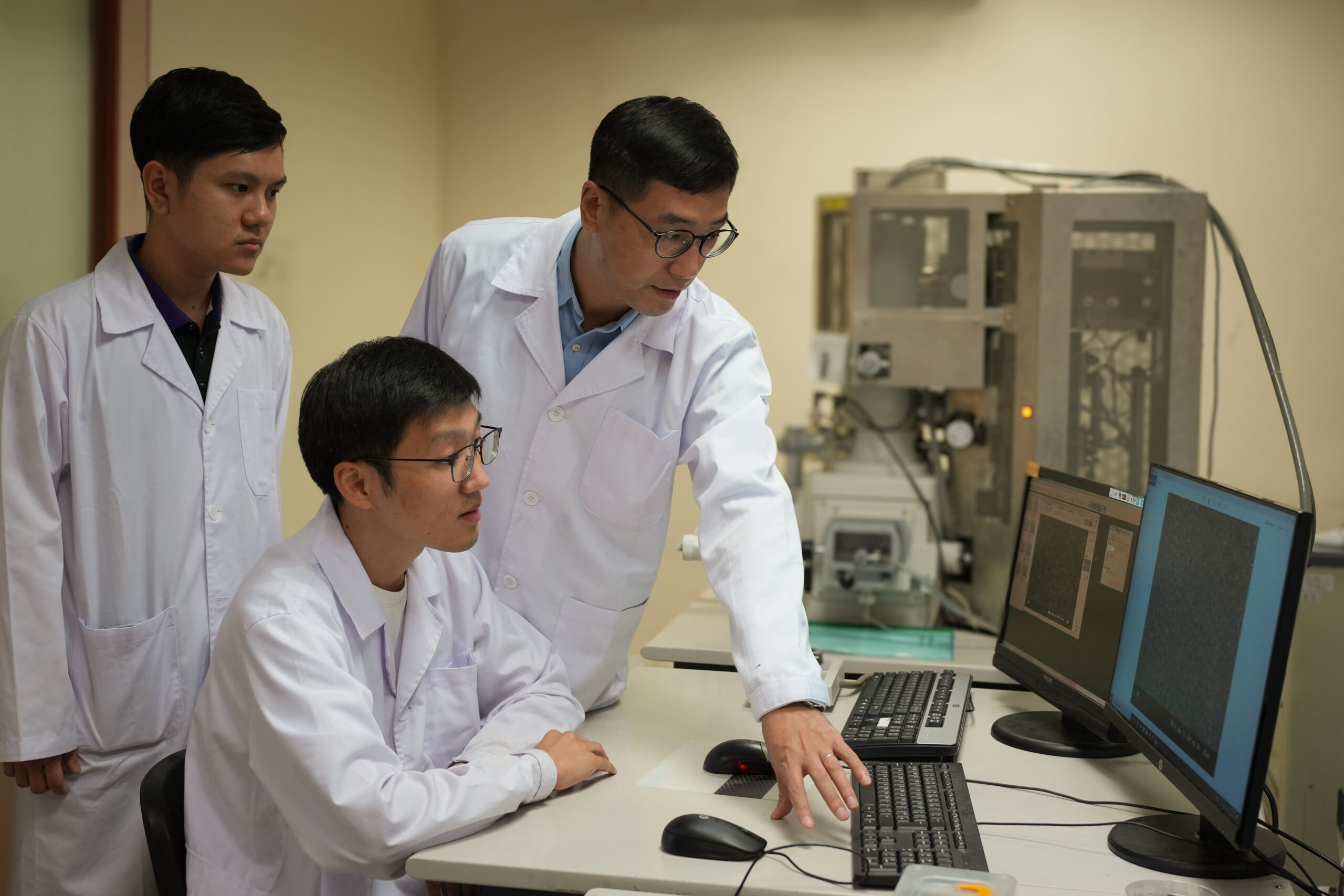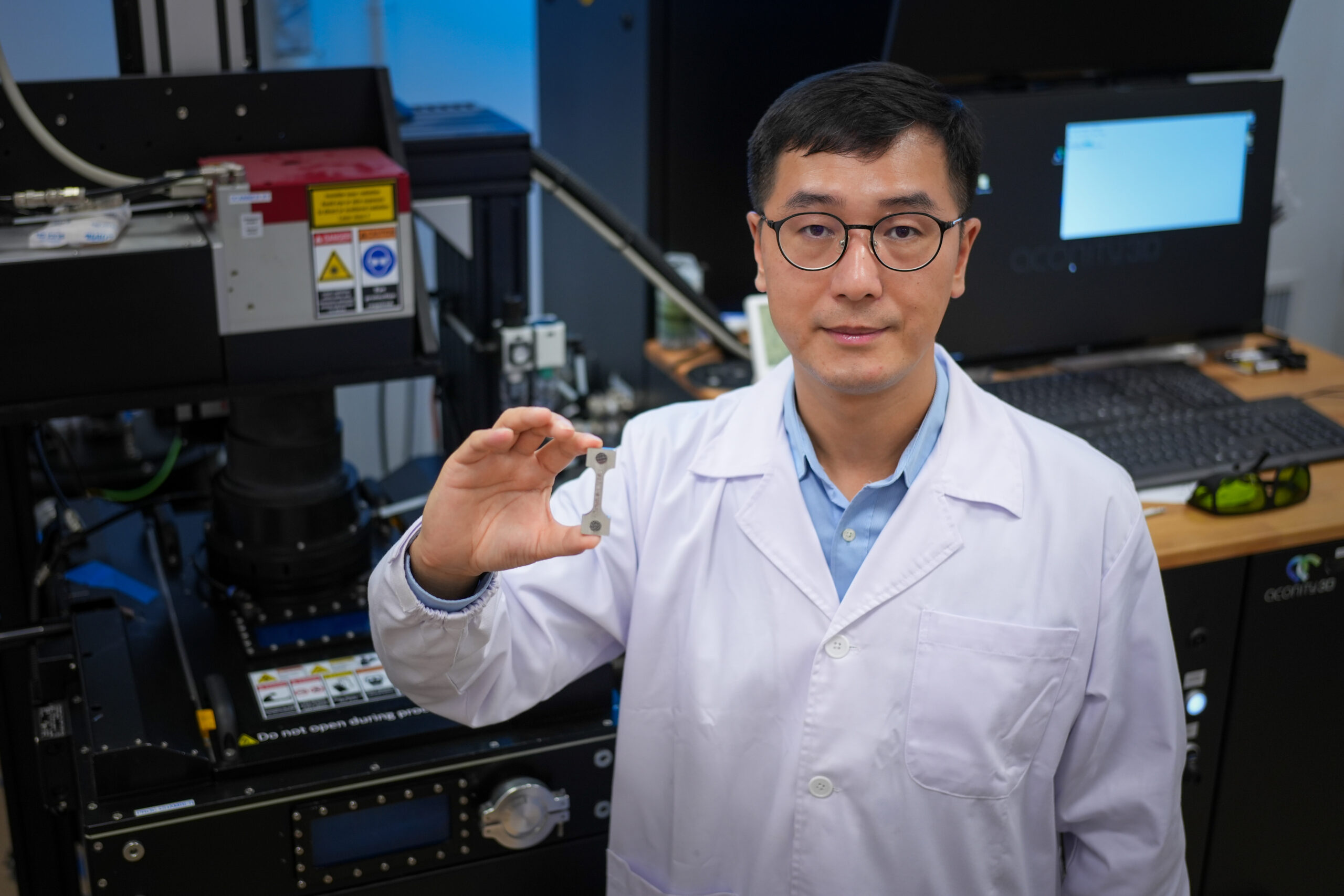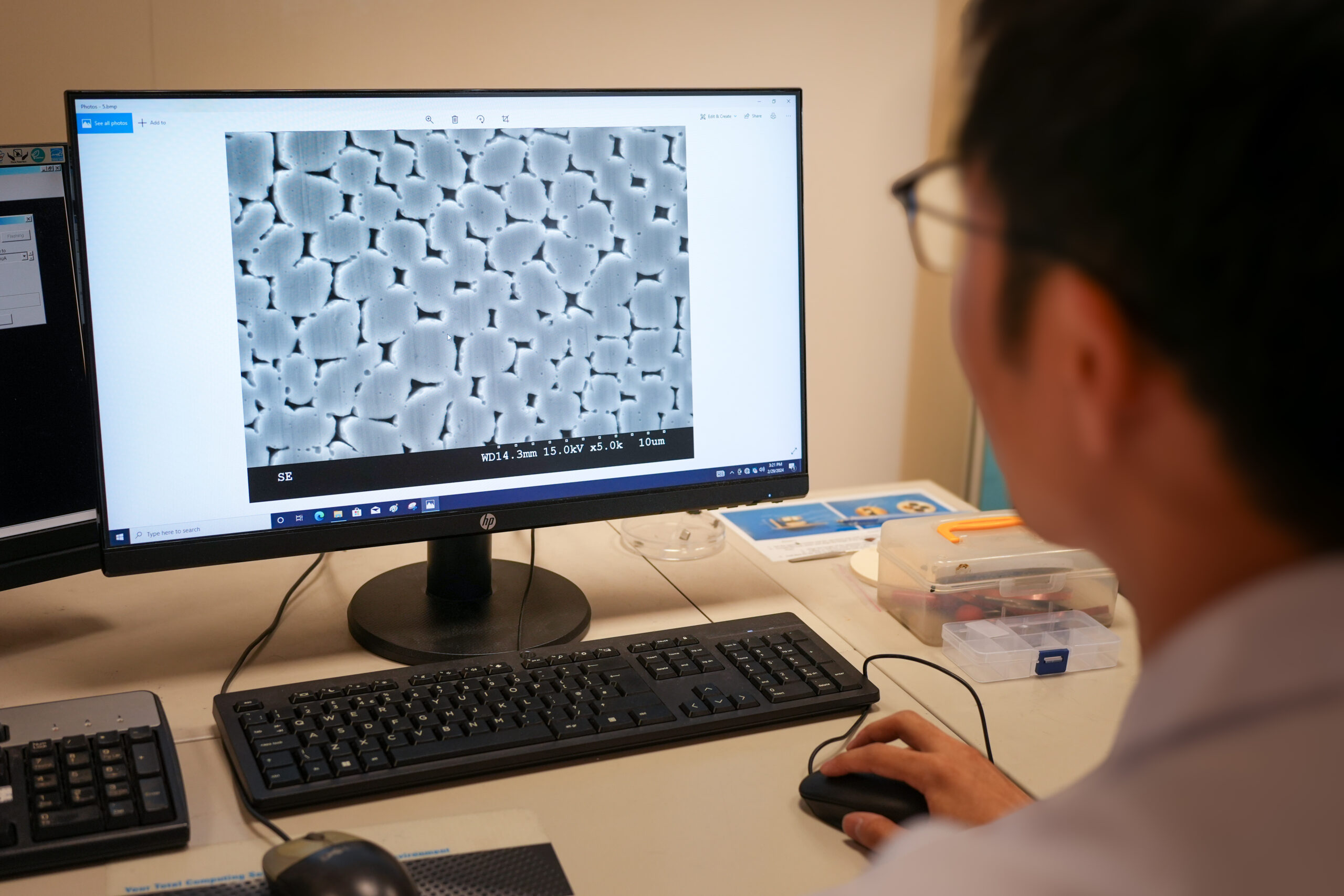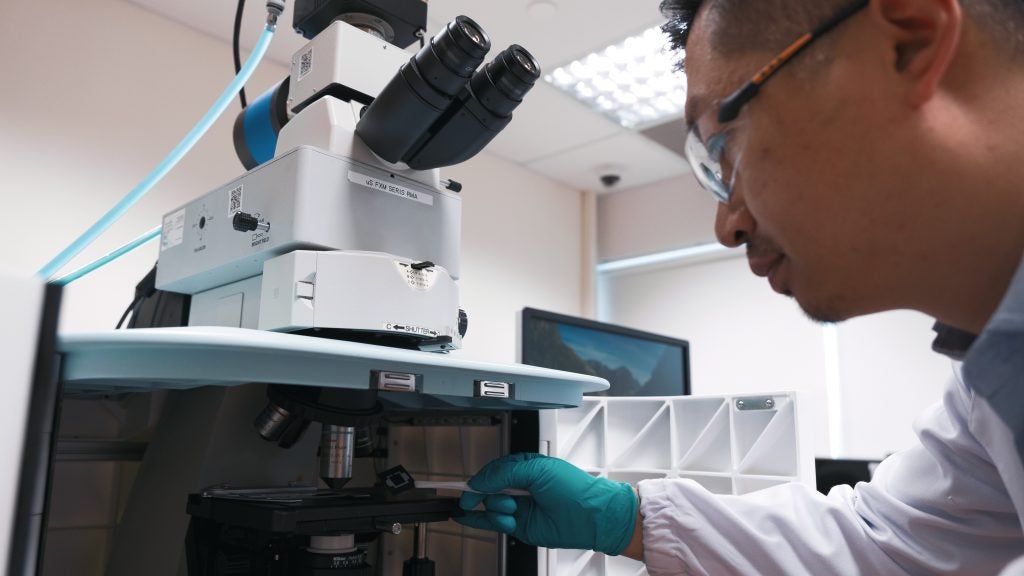
A new alloy material inspired by nature and designed and developed by researchers at CDE could redefine how we design tough and resilient materials.
The ultra-strong and as-yet-unnamed alloy was designed and developed by Assistant Professor Tan Xipeng (Mechanical Engineering), who collaborated with researchers from UC Berkeley, NTU and Xi’an Jiaotong University (XJTU) on the fabrication, imaging and testing aspects of the alloy’s development.
Their findings were published recently in the journal Nature Communications.
“Our research aims to design and produce resilient engineering alloys capable of withstanding extreme conditions such as high pressure, ultra-low temperatures, and corrosive environments,” said Asst Prof Tan, who leads a research group on high-performance multifunctional metal alloys at CDE.
“For example, we’re looking at applications such as aerospace, deep-sea exploration, processing of liquefied hydrogen, as well as extremely cold cryogenic instrumentation like those used on spacecraft or in some medical applications.”

Varied microstructure
The key to the material’s remarkable durability lies in both its composition and its fabrication, using advanced laser-based 3D printing techniques.
The material itself is classed as a high-entropy alloy, meaning it includes multiple elements in roughly equal proportions, rather than one or two primary elements as with traditional alloys. In this case, the alloy is principally made from nickel, iron, cobalt, chromium and aluminium.
The inclusion of multiple elements and structural forms – known as phases - in a high-entropy alloy gives it a diverse and varied microstructure. With an optimal blend of components, this can significantly enhance its mechanical and functional properties.
“Making materials stronger using traditional methods usually makes them less able to handle damage or more at risk of fracture, creating what has generally been thought of as a trade-off between strength and toughness,” said Asst Prof Tan.
“However, this new alloy, which we fabricate using a ‘bottom-up’ 3D printing technique, overturns that rule. Using this process, the alloy not only boasts unprecedented fracture toughness when compared to all existing engineering materials, but also combines strength and resilience at a level not seen before.”
The material’s extreme durability comes from a microscopic honeycomb structure, inspired by nature, that is formed layer-by-layer using a 3D printing process called laser powder-bed fusion (L-PBF).
As well as being used by bees, honeycomb-like structures are also seen at varying scales in other natural situations where strength, rigidity and lightness are needed - for example in the shells of animals like armadillos and sea creatures, as well as the beaks of birds.

Nature-inspired materials
Asst Prof Tan, who teaches a graduate class on nature-inspired materials and design, believes that exploring innovative approaches rooted in nature can serve as a catalyst for advancements in engineering applications.
“In nature, there are only three categories of material: sugar, protein and mineral,” he said. “But from this combination, we get millions of different species, many of them with amazing or unprecedented mechanical performance.”
He added that the process of 3D printing is itself nature-like because of its ‘bottom-up’ method which builds up materials into the desired form. In contrast, conventional ‘top-down’ methods of fabrication begin with a larger block of material that is then machined or otherwise cut down to create the desired shape.
Building on this ‘bottom-up’ process, as well as the significantly faster cooling and setting that 3D printing allows, the researchers were able to fabricate the new alloy into an extremely fine microstructure, mimicking the honeycomb form seen in nature.

Maximising performance
“This honeycomb microstructure includes tiny bridges, about one micron in length, that connect the soft inner cores as well as the harder outer layers,” Asst Prof Tan said.
“This not only enhances the strength of the material but also makes it remarkably resistant to breaking – creating a perfect combination for applications and environments where durability is critical.”
During the alloy development, samples of the 3D printed material were tested at room temperature, cryogenic temperatures, and elevated temperatures in the lab of H.T. & Jessie Chua Distinguished Professor Robert O. Ritchie at the Lawrence Berkeley National Laboratory.
Materials characterisation tests and imaging to reveal the underlying mechanism of the alloy was also conducted by research collaborators at NTU and XJTU.
Going forward, Asst Prof Tan said the next phase of research will shift focus towards investigating additional properties of the high-entropy alloy, delving into aspects like fatigue, resistance to embrittlement, and other properties that will maximise its performance, reliability and safety.






